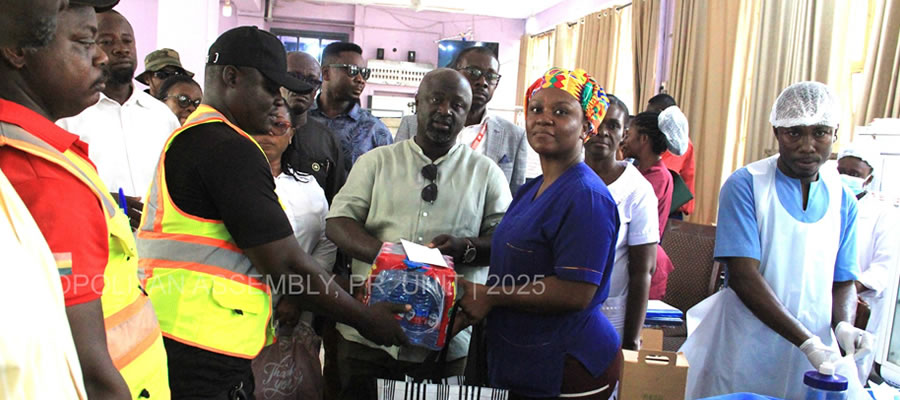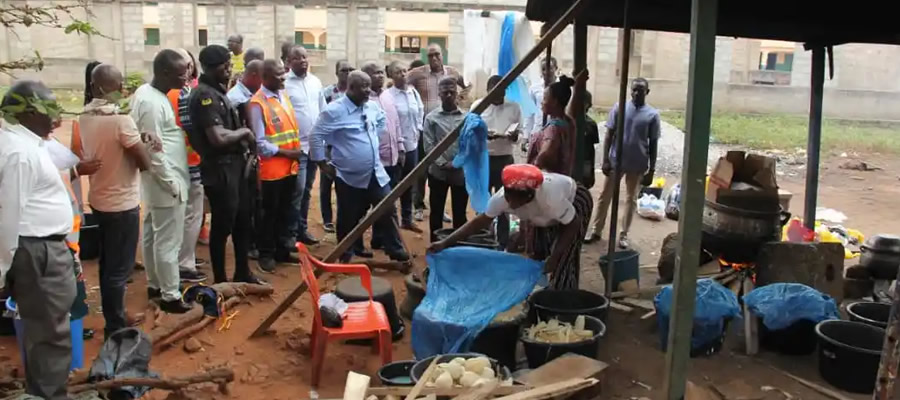

Development Projections
Development Focus (2006–2009) Prospects and Framework for Development
The prospects and framework outline the overall scope and direction of future development. These cover among other things, population projections, physical and social needs (roads, education and health as they fall under the three pronged thematic area, namely;
Private Sector Competitiveness
Human Resource Development
Good Governance and Civic Responsibility
Population Projection
Human beings are the ultimate beneficiaries of all development initiatives. It is in this regard that the knowledge about the size of the population, composition, current and future needs are central to development planning.
For it is only with that knowledge that informed decisions can be made regarding the kind of intervention undertaken by any given district with respect to set goals. Population projection is therefore a fundamental tool and the basis for development planning.
The population of the metropolis is projected using the Exponential Method. This has been preferred in view of the nature of the variables that constitute the population dynamics; namely;
The Birth Rate
The Death Rate
The Rate of Migration
The choice of this method is also premised on the assumption that:
The birth rate will be high within the plan period
The death rate will remain constant within the plan period
The rate of migration will increase within the plan period
On the basis of these assumptions, therefore the various projections have been made in Table 47.
Development Problems
Summary of Key Development Problems/Issues/Gaps
Introduction
The key development problems, issues and gaps of the city profile presented in chapter one has been summarized under the three thematic areas. It defines the problems/issues/gaps, community needs and aspirations and demands of the private sector for all the thematic areas covered in the profile.
In addition, the data has been analyzed in terms of potentials, opportunities, constraints and challenges.
Private Sector Competitiveness
1. Low capital base of micro and medium scale enterprises
2. Low levels of income
3. High rate of youth unemployment
4. Slow growth of the informal sector
5. Dormant micro tourism industry
6. High unpaved road length
7. Missing links in road network
8. Inadequate arable land areas.
9. Lack of technical know-how in non-traditional agriculture
10. Improper use of agro-chemicals in the metropolis.
11. Insufficient funds for human resource development and monitoring.
12. Over-loading at the primary transformer stations.
13. Unreliable power supply.
14. Periodic shortage of critical materials for energy supply.
15. High number of un-metred premises.
16. High cost of domestic fuel.
17. Environmental pollution resulting from charcoal burning.
18. Lack of adequate information on trade, industry, and tourism in the metropolis.
19. Low patronage of DMHIS
20. Traffic congestion
21. Inadequate parking spaces
22. Over dependency on CBD for commercial activities
Human Resource Development
1. Decreasing arable land in the Metropolis
2. Encroachment on open spaces and community right of space
3. Lack of updated survey maps
4. High rate of population growth
5. Development precedes utility service provision
6. Weak institutional linkage between industry and education
7. Low preschool Participation
8. High non-participation rate at Basic school level
9. Shortfall in classroom provision at preschool level
10. Noise pollution
11. Deficit in Basic school level infrastructural provision of classrooms
12. High exodus of health professionals
13. High Prevalence of HIV/AIDS
14. Low capacity of water provision and distribution
15. Poor environmental sanitation practices
16. Population growth rate outstrips growth rate of housing supply
17. Child labour /abuse
18. High rate of slum development
19. Weak coordination among utility service providers (eg GT, ECG, GWSC)
20. Occasional flooding due to the fact that developers have built in waterways.
21. Sub-standard constructional materials are used in building by developers.
22. Frequent fire outbreaks due to poor wiring.
23. Difficulty in accessing land.
24. Lack of adequate skills in ICT.
Good Governance and Civic Responsibility
1. Inadequate equipment and logistics for effective management of development
2. Low contribution of IGF to total revenue
3. Over reliance on grants for development
4. Weak assembly substructures and lack of basic infrastructure for effective work
5. Low women participation in political/ governance issues.
6. Lack of intra and internet services to enhance easy access to information.
7. Insufficient skills in ICT programmes on the part of staff.
Key to scores
Very strong linkage with harmonized development problems -3
Strong linkage with harmonized development problems -2
Weak Linkage with harmonized development problems -1
No linkage with harmonized development problems -0
Linking Harmonized Identified Development Problems/Issues/Gaps to the Growth and Poverty Reduction Strategy (GPRS II)
After harmonising community needs and aspirations with key development problems/issues/gaps of the Ghana Poverty Reduction Strategy (GPRS 1), it became necessary to link the harmonised identified development problems/issues/gaps to the Growth and Poverty Reduction Strategy (GPRS 11) to ascertain how the identified problems/issues/gaps relate to the GPRS 11 thematic areas.
Below gives the detailed analysis:
Key to Scores
Very strong linkage with harmonized development problems - 3
Strong linkage with harmonized development problems - 2
Weak Linkage with harmonized development problems - 1
No Linkage with harmonized development problems - 0
Date Created : 11/28/2017 5:51:13 AM












 facebook
facebook
 twitter
twitter
 Youtube
Youtube
 +233 593 831 280
+233 593 831 280 0800 430 430
0800 430 430 GPS: GE-231-4383
GPS: GE-231-4383 info@ghanadistricts.com
info@ghanadistricts.com Box GP1044, Accra, Ghana
Box GP1044, Accra, Ghana